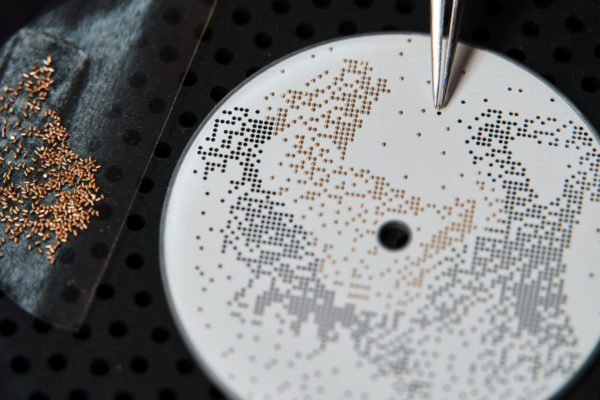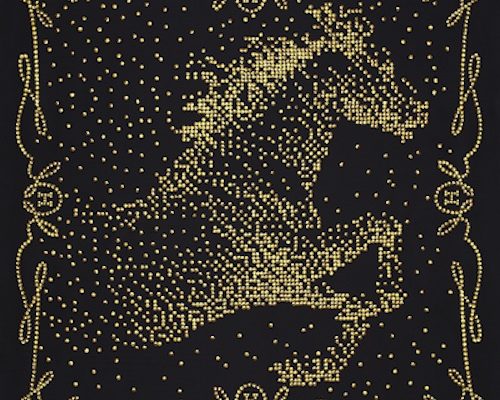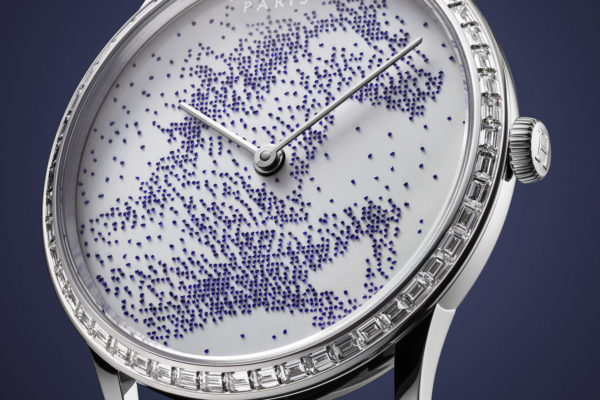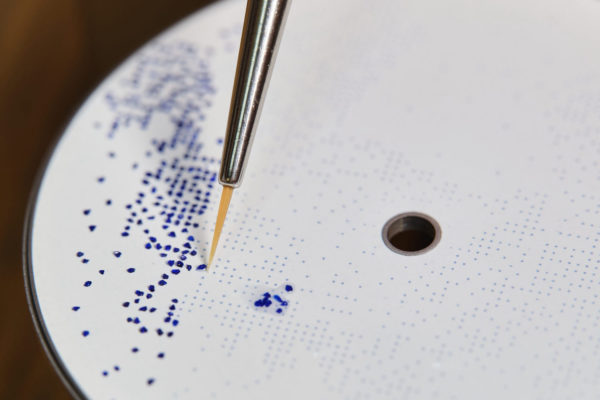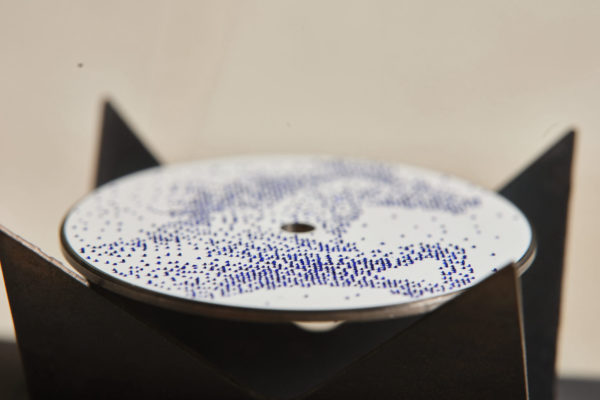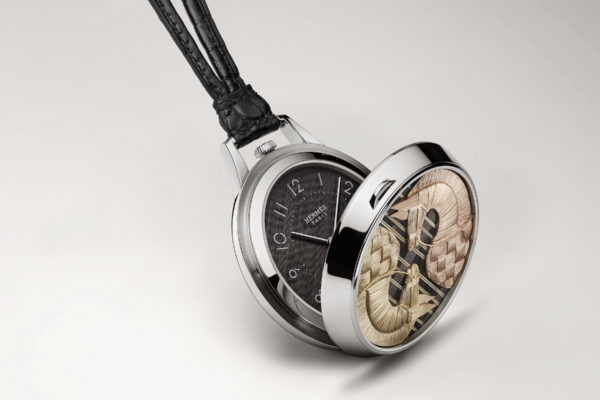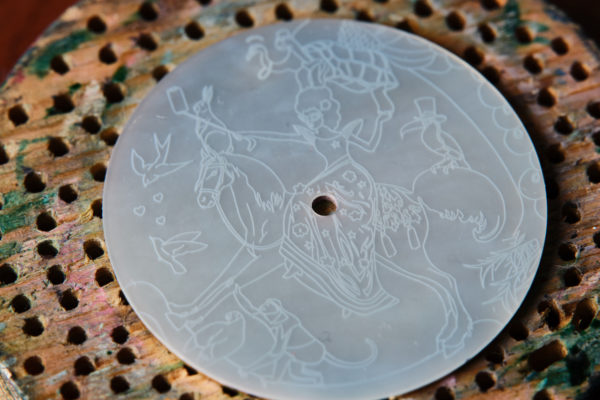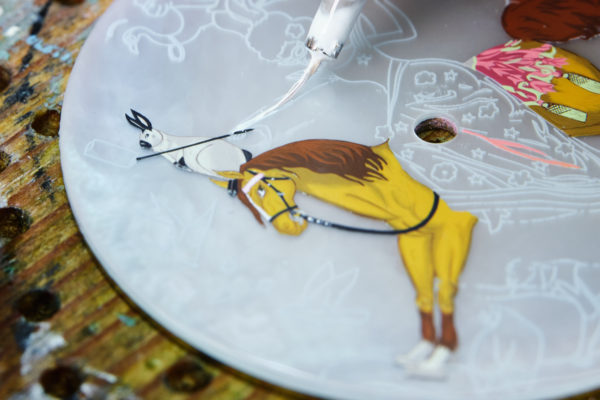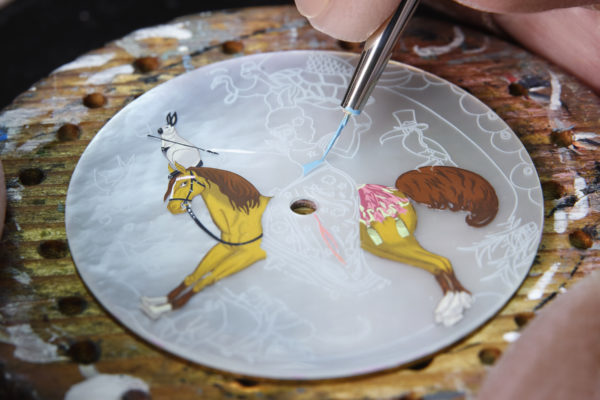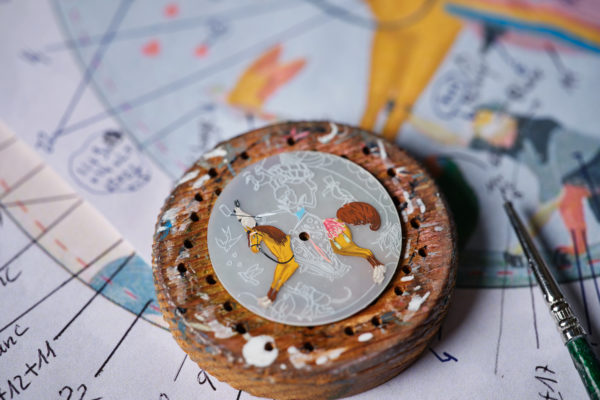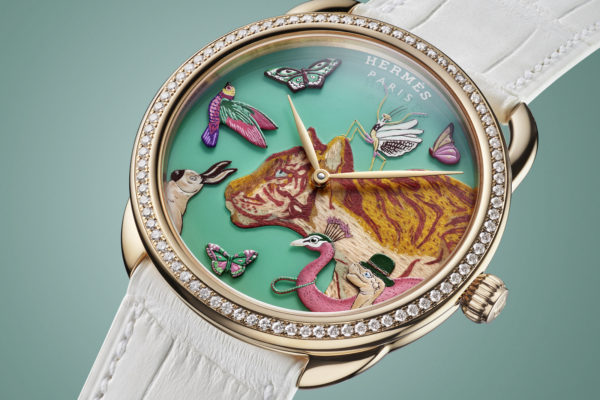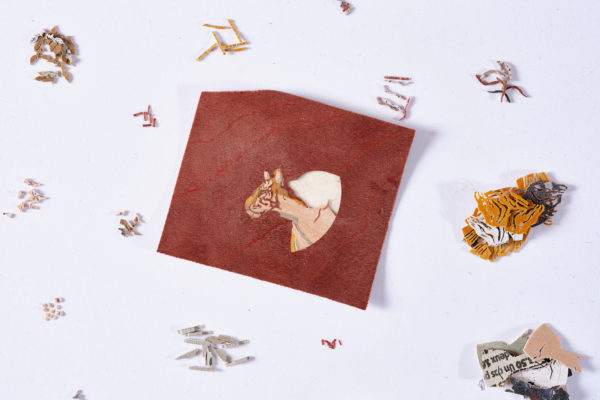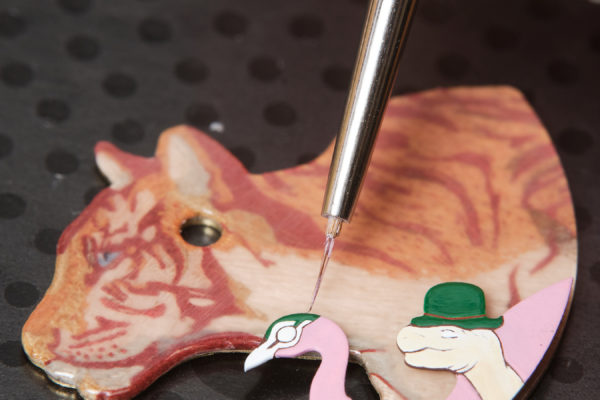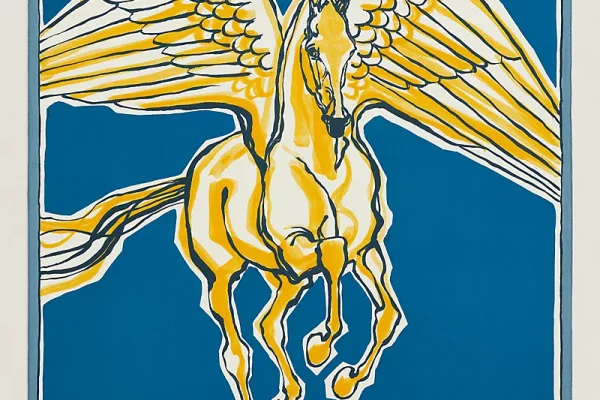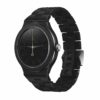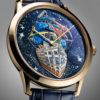Phantasmagoria at the heart of Hermès watches
Every manufacture, every watchmaking house, has its own style, its own signature. Hermès’ style combines technique and storytelling: whether it involves using a new craft, inventing a complication or portraying unreal characters, its watches tell stories that appeal to our imagination. Isabelle Cerboneschi
Watchmaking is an art and a craft that, beyond all its technical complexities, carries a beautiful mystery. It’s extraordinary, when you think about it, to be able to tell the precise time thanks to a clever arrangement of small metal components – cogs, screws, cams, bridges, springs, balances – which, when assembled, form a mechanism that can be activated by a crown or the simple movement of the wrist. Watchmaking cannot be achieved without a pinch of magic. Every watchmaker, every manufacture achieves this small miracle of precision in its own way, but there is one house that draws, with each of its creations, a gigantic phantasmagorical fresco: Hermès Horloger.
Hermès knows how to make watches and tell stories, among other things, and its timepieces combine these two skills. Some even verge on the mission impossible when, in order to make them, they have to invent a craft that does not exist. This was the case, for example, when Hermès called on the skills of a master glassmaker to create its Arceau Millefiori watch. “When we visited the Saint-Louis crystal workshops (which belongs to the Hermès group) and I saw all the creativity contained in the crystal paperweights they make, I said to myself that we should try to reproduce them in miniature on a watch. It wasn’t easy, given the thinness of the dial, but by challenging the craftsmen, we succeeded! The result brings something different to the watchmaking world. We opted for the same approach with the leather crafts by inventing the leather mosaic,” explains Philippe Delhotal, Creative Director at Hermès Horloger.

To fully embrace all the fantasy of Hermès, you have to take the time to look at each of its creations and pass them through the finest filter of your imagination. During the latest Watches & Wonders show, visitors were able to admire more Than twenty watches using a variety of artistic techniques. They were presented in a poetic installation designed by artist Clément Vieille.
Phantasmagoria has always existed in the Hermès world,” explains Philippe Delhotal. Our objects must be able to make customers dream and transport them into an unreal world. Why do people come to Hermès to buy our watches? Because we are capable of taking a step aside, and that’s what they are looking for: that slightly offbeat spirit. We do things lightly but very seriously. This is one of the hallmarks of the company, in all areas, be it ready-to-wear, watches, decorative objects, etc. But we owe a lot of this lightness to the design: 90% of our watch creations have their origins in our silk scarves”.
Silk scarves at the origin of dials
We select around forty models, mainly from the year’s collections. We lay them out on the floor, sorting them by theme: animal, abstract, contemporary, classical, equestrian, etc., to achieve a balance. Then we choose around twenty, which we get approved by Pierre-Alexis Dumas, Hermès’ general artistic director. Then it’s a matter of defining the type of watch best suited to each motif. It’s the design that guides us. If it’s very detailed, very precise, it’s in our interest to use it on a large-diameter timepiece. Finally, we need to find the technique that will sublimate this design,” explains Philippe Delhotal.
When it comes to the techniques used, Hermès strongly emphasises the traditional crafts it employs, but not only that. “I find the combination of modern techniques and craftsmanship interesting. To achieve certain designs, we sometimes use techniques that don’t belong to the art of watchmaking. You have to know how to use the technologies available today.

The gold wire technique was used to create the Cheval Ikat design. “It was so special that we had to look for a technique that was far removed from traditional craftsmanship. We turned to Wire Art Switzerland, a company founded by two engineers and based in Sainte-Croix. They had the idea of giving a new lease of life to bonding machines, which were used to solder the gold wires of integrated circuits. By diverting them from their original function, they create design ‘woven’ from recycled pure 24-carat gold wires. The directions and interlacing of the 25-micron gold wires create complex patterns that come to life through movement and the play of light. This technology has been recycled so that it can be used in the service of craftsmanship. It’s a way of giving machines an artistic end to their careers. The year is 2023, and we need to ensure that traditional crafts continue to exist, while at the same time developing new ones using the technologies available today,” emphasises Philippe Delhotal.

To illustrate all the creativity that Hermès Horloger is capable of, I have chosen to highlight four timepieces presented at the latest Watches & Wonders show: the Slim d’Hermès Cheval de légende, the Slim d’Hermès Pocket Masan Masan pocket watch, and the Arceau Hermès Story and Arceau Libre Comme Pégase models.
Slim d’Hermès, Cheval de légende
This model is inspired by the Cheval de Légende scarf designed in 2010 by artist Benoit Pierre Emery. The idea for this celestial ride in gold dots on silk came to him when he discovered a sleigh decorated with scrolls of golden nails in Lancut Castle, during a trip to Poland.
While the design is extremely simple, its reproduction on the dial is extremely complex. “What technique should we use to render this motif, made up of a multitude of tiny dots, on a watch face? Miniature? That didn’t work at all. The difficulty lay in finding the right technique to render the authenticity of the design and what the designer wanted to express. There’s a creative complicity between the craftsmen and the designers, and often it’s the drawing that leads us to the right technique. So we showed it to our craftsmen, who suggested we use small balls of gold and enamel. We then had to find a way of placing the 1,678 mini spheres that make up the equestrian motif on the dial,” explains Philippe Delhotal.
This technique requires both precision and patience. The craftsman uses a laser to carve tiny cavities in a gold surface that has been enamelled and polished by hand. One by one, he places the 1,678 beads of pink gold or enamel inside, before baking them in an oven to set them. The molten enamel on the dial captures the little spheres and the whole thing holds together,” notes Philippe Delhotal. But when it comes to the enamel balls, you have to be very careful about how long the dial is going to spend in the oven: if you leave it in too long, the balls will melt. We had to go through a number of iterations to achieve a fairly faithful reproduction of the original scarf in two colours.
The result is astonishing. When you look at the watch, you have the feeling that the horse is fading away, as dreams do, leaving only a few dots of its silhouette to be seen.
Slim d’Hermès Pocket Masan Masan
On discovering this pocket watch, I wondered what technique Hermès had used to create its dial, considering several possibilities, all of which were wrong. The two horse heads engraved in yellow and pink gold intertwine on a horsehair marquetry dial.
We’d wanted to make a horsehair dial for years, but unfortunately it’s an extremely difficult material to work with,” says Philippe Delhotal. You can’t bend it, because it breaks. I approached the Parisian workshop Alba, set up by a very creative young couple (Célia Suzanne and Erwann Larbre, editor’s note) who do contemporary marquetry, particularly with straw and horsehair. They usually work on much larger surfaces, such as cases or screens, and I asked them if they could work on a small surface. The aim was to be able to reproduce the Masan Masan design (created by designer Terawat Teankaprasith). To create the surface of the dial, they used small strands of horsehair in different colours. They had to tame the material to obtain this extremely fine marquetry. Then the workshops came to place the two horse heads in pink and yellow gold. We will be launching another version with the horsehair horsehead in 2024.
Arceau Hermès story
You have to take the time to observe all the characters and animals on the dials of these two watches, miniature paintings on mother-of-pearl for the first model and wood marquetry, painting and engraving for the second, to fully grasp the humour of the sketches depicted. They are inspired by the drawings of Englishman John Burton. We reproduced this very colourful design using miniature paint on a mother of pearl base: a relatively classic technique,” explains Philippe Delhotal. What we really liked was the presence of small characters who tell a story. The woman taking a selfie in the 18th century is a totally improbable scene! I found this scarf very funny and we did several close-ups of the design, which resulted in two watches, including another model with animals. There’s a tiger (made from wood marquetry and made up of 290 pieces, editor’s note), a rabbit, butterflies, a hummingbird, etc. There’s a real fantasy in these watches! They have that cheerful, slightly surprising, sometimes naïve side that makes our objects so charming”.
You’d have to be Hermès to dare paint an eighteenth-century courtesan taking a selfie on a dial, surrounded by animals just as egocentric and anachronistic as herself: a toucan wearing a top hat, an embellished peacock or a tortoise sporting a bowler hat. A few “likes”, made up of red hearts, fly into the air. It’s a light-hearted way of talking about an era that isn’t really so light-hearted.
Arceau Libre comme Pégase
Although engraved in stone, Pegasus, the famous winged horse and son of Poseidon, seems to want to fly off the dial on the strength of his bulging muscles and outstretched wings. Its vigorous morphology was created by Jean-Louis Sauvat, a sculptor, draughtsman, painter and skilled horseman. The powerful body of the mythological animal has been sculpted in anthracite agate, like a cameo. This ancient art of glyptics, which is the art of sculpting fine stones, dates back to 5000 BC.
The three-dimensionality of the winged horse is fascinating. We no longer look at the hands on the dial, but at the nuances of colour in the stone and the imaginary flight of this mythological animal. “To make this watch, we started with an obviously simple design. The silk scarf was transparent. How could we render it on a dial? We first thought of using crystal before opting for glyptic. Agate was the obvious choice. By engraving the stone, the glyptician discovered layers of different colours that gave the piece its volumes as well as different levels of transparency. This is the first time we’ve worked with this technique,” says Philippe Delhotal.
This watch and the expertise from which it springs can simply be admired. But if you’re looking for a hidden meaning in all things, you might recall that, according to legend, the winged creature kicked up the Hippocrene spring, home to the Muses, and that all you had to do was drink its water to water the writer’s pen. It makes you dream…



